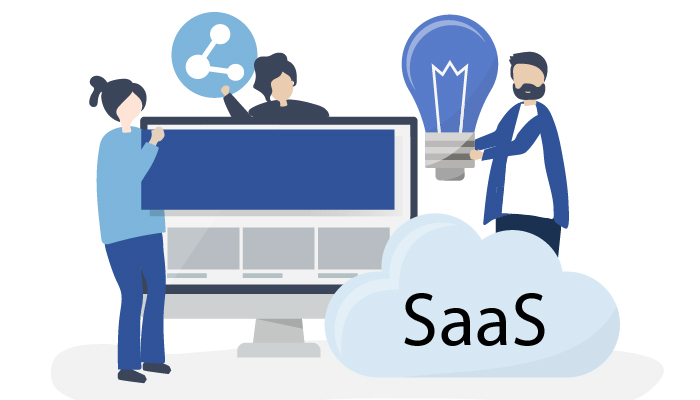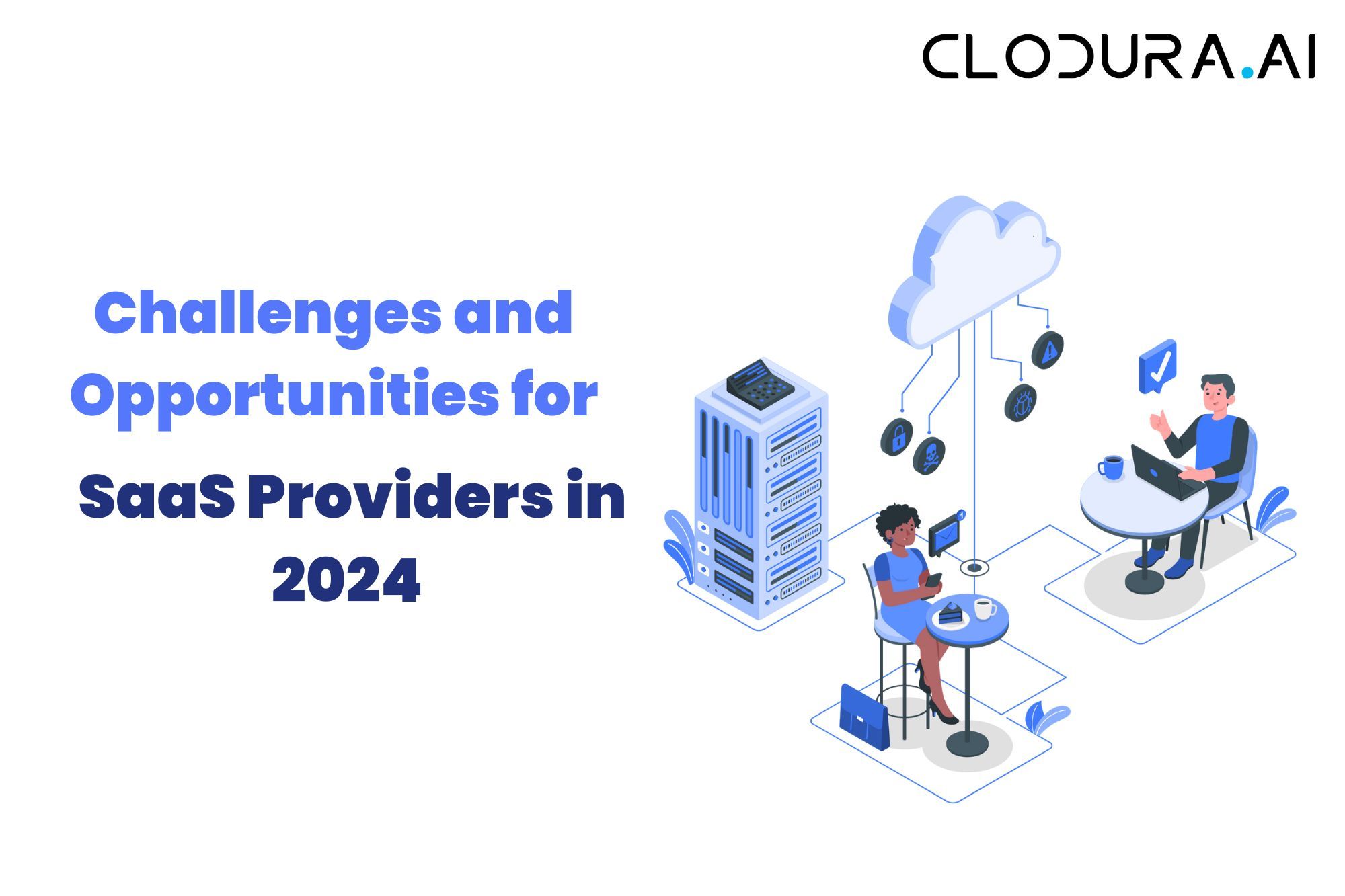In the fast-paced world of software-as-a-service (SaaS), providers are constantly faced with new challenges and exciting opportunities as technology continues to evolve. As 2024 approaches, SaaS providers must stay ahead of the game to thrive in this competitive landscape. From shifting customer demands and increasing security concerns to emerging trends and technological advancements, the road ahead is anything but predictable. Innovative solutions that offer scalability, flexibility, and seamless integration are the key to success for SaaS providers in the coming years.
Embracing artificial intelligence and machine learning, leveraging the power of big data analytics, and focusing on personalized user experiences will be essential to stay relevant in the market. SaaS providers must also prioritize cybersecurity and data protection measures to maintain the trust of their clients. While challenges may arise, they also bring forth opportunities for growth and innovation.
Adapting to changing customer needs, exploring new markets, and developing strategic partnerships can help SaaS providers stay competitive. By constantly evolving and embracing emerging technologies, SaaS providers can turn challenges into opportunities and pave the way for a successful future in the industry.
Current challenges faced by SaaS providers
● Evolving customer demands and expectations
One of the biggest challenges SaaS providers face in 2024 is meeting the ever-evolving demands and expectations of their customers. As technology continues to advance at a rapid pace, customers expect more from their SaaS providers. They want seamless integration with their existing systems, real-time data analytics, and personalized user experiences. SaaS providers must constantly innovate and adapt to these changing demands to stay competitive in the market.
● Increasing security concerns
With the rise in cyber threats and data breaches, SaaS providers must prioritize cybersecurity and data protection measures. Customers are becoming more aware of the risks involved in sharing their data with SaaS providers, and they expect robust security measures to be in place. SaaS providers need to invest in advanced encryption techniques, implement multi-factor authentication, and regularly update their security protocols to build trust with their clients.
● Intense competition and market saturation
As the SaaS market continues to grow, competition among providers is becoming increasingly intense. With new players entering the market every day, SaaS providers need to differentiate themselves to stand out from the crowd. They must offer unique features, provide exceptional customer service, and deliver superior value to their clients. SaaS providers need to constantly monitor the market and stay ahead of emerging trends to maintain their competitive edge.

The evolving landscape of SaaS in 2024
In 2024, the SaaS landscape will continue to evolve, presenting both challenges and opportunities for providers. Here are some key trends and changes to expect in the coming years:
● Artificial intelligence and machine learning
Artificial intelligence and machine learning will play a significant role in shaping the future of SaaS. These technologies will enable SaaS providers to automate tasks, improve decision-making processes, and personalize user experiences. AI-powered chatbots will handle customer inquiries, while ML algorithms will analyze data to provide valuable insights. SaaS providers that embrace AI and ML will be better positioned to meet customer expectations and deliver innovative solutions.
● Big data analytics
As the volume of data continues to grow, SaaS providers need to harness the power of big data analytics to extract valuable insights. Advanced analytics tools will enable SaaS providers to analyze large datasets in real-time, helping them make data-driven decisions and improve their offerings. By leveraging big data analytics, SaaS providers can optimize their products, enhance customer experiences, and identify new market opportunities.
● Personalized user experiences
In the era of personalization, customers expect tailored experiences that cater to their unique needs and preferences. SaaS providers must focus on delivering personalized user experiences to stay relevant in the market. By leveraging customer data and analytics, SaaS providers can understand individual preferences, anticipate customer needs, and deliver personalized recommendations and solutions. This level of customization will not only enhance customer satisfaction but also drive customer loyalty.
Opportunities for growth in the SaaS industry
While challenges may arise, they also bring forth opportunities for growth and innovation. SaaS providers can leverage these opportunities to expand their market share and stay ahead of the competition.
Here are a few key opportunities for growth in the SaaS industry:
● Adapting to changing customer needs
As customer demands evolve, SaaS providers need to adapt and tailor their offerings accordingly. By actively listening to customer feedback and staying updated on industry trends, SaaS providers can identify new opportunities to meet emerging customer needs. This may involve developing new features, integrating with other platforms, or expanding into new markets.
● Exploring new markets
The SaaS market is continuously expanding, presenting opportunities for SaaS providers to explore new markets. By identifying niche markets or untapped industries, SaaS providers can gain a competitive advantage. They can develop industry-specific solutions, target new customer segments, and expand their customer base. Exploring new markets also allows SaaS providers to diversify their revenue streams and reduce dependency on a single market or industry.
● Developing strategic partnerships
Strategic partnerships can open doors to new opportunities and accelerate growth for SaaS providers. By collaborating with complementary businesses or industry leaders, SaaS providers can tap into new customer networks, access additional resources, and leverage the expertise of their partners. Strategic partnerships also enable SaaS providers to offer integrated solutions and expand their product offerings, providing added value to their customers.
Strategies to overcome challenges and embrace opportunities
To overcome the challenges and embrace the opportunities in the SaaS industry, providers need to adopt effective strategies. Here are a few strategies that can help SaaS providers navigate the ever-changing landscape:
● Continuous innovation and product development
Innovation is the key to staying ahead in the SaaS industry. SaaS providers need to invest in research and development to continuously improve their products and services. By incorporating customer feedback, understanding market trends, and leveraging emerging technologies, SaaS providers can develop innovative solutions that meet the evolving needs of their customers.
● Customer-centric approach
Putting the customer at the center of everything is crucial for SaaS providers. By understanding their customers' pain points, preferences, and goals, SaaS providers can deliver solutions that truly address their needs. Regular communication, feedback loops, and user testing can help SaaS providers gather valuable insights and ensure that their offerings align with customer expectations.
● Robust cybersecurity measures
To gain and maintain the trust of their clients, SaaS providers must prioritize cybersecurity and data protection measures. Implementing advanced encryption techniques, conducting regular security audits, and investing in employee training can help SaaS providers build a strong security infrastructure. By demonstrating a commitment to data privacy and security, SaaS providers can differentiate themselves in the market and attract security-conscious customers.
The role of technology in addressing SaaS challenges
Technology plays a significant role in addressing the challenges faced by SaaS providers. Here are a few ways technology can help SaaS providers overcome these challenges:
● Automation and efficiency
Automation can help SaaS providers streamline their processes, reduce manual errors, and improve overall efficiency. By automating routine tasks, SaaS providers can free up valuable time and resources to focus on more strategic initiatives. From automated billing and invoicing to self-service customer support, automation can enhance the customer experience and drive operational efficiency.
● Predictive analytics
Predictive analytics can help SaaS providers anticipate customer needs, identify trends, and make data-driven decisions. By analyzing historical data and patterns, SaaS providers can predict customer churn, identify upsell opportunities, and optimize their pricing strategies. Predictive analytics can also help SaaS providers identify potential security threats and proactively mitigate risks.
● Cloud computing and scalability
Cloud computing enables SaaS providers to scale their services quickly and efficiently. By leveraging cloud infrastructure, SaaS providers can handle increasing data volumes, accommodate growing customer bases, and deliver seamless user experiences. Cloud-based solutions also provide flexibility, allowing SaaS providers to easily adapt to changing customer demands and market dynamics.
Key trends and predictions for the SaaS market in 2024
As the SaaS market continues to evolve, several key trends and predictions are expected to shape the industry in 2024:
● Vertical-specific SaaS solutions
In 2024, we can expect to see an increase in vertical-specific SaaS solutions. As more industries embrace digital transformation, SaaS providers will develop industry-specific solutions tailored to the unique needs of different sectors. This trend will allow SaaS providers to cater to niche markets and provide highly specialized solutions that address specific industry challenges.
● Integration and interoperability
Integration and interoperability will become increasingly important in the SaaS market. As customers demand seamless integration between different software applications, SaaS providers will need to develop open APIs and ensure compatibility with other platforms. This trend will enable SaaS providers to offer more comprehensive solutions and provide a seamless user experience.
● Rise of low-code and no-code platforms
Low-code and no-code platforms will gain popularity in the SaaS market. These platforms allow users to build applications and automate processes without extensive coding knowledge. SaaS providers that offer low-code or no-code solutions will empower users to customize their software and workflows, reducing their reliance on IT departments and enabling rapid innovation.
Case studies of successful SaaS providers
Several SaaS providers have successfully navigated the challenges and capitalized on the opportunities in the industry. Let's take a look at a couple of case studies:
Case Study 1: Slack
Slack, a leading team communication platform, has successfully differentiated itself in the highly competitive SaaS market. By offering a user-friendly interface, seamless integration with other applications, and a robust set of collaboration features, Slack has become the go-to communication tool for teams worldwide. Slack's emphasis on user experience and continuous innovation has helped them gain a significant market share and attract high-profile clients.
Case Study 2: Salesforce
Salesforce, a pioneer in cloud-based CRM solutions, has consistently adapted to changing customer needs and market dynamics. By leveraging emerging technologies like AI, Salesforce has been able to provide personalized user experiences and deliver actionable insights to its customers. Salesforce's strong focus on customer success, extensive partner ecosystem, and continuous product development have made it a dominant player in the SaaS industry.
Tips for SaaS providers to stay ahead in the industry
To stay ahead in the SaaS industry, providers need to continuously innovate and adapt to changing market conditions. Here are a few tips for SaaS providers to maintain their competitive edge:
● Stay updated on industry trends
SaaS providers need to stay updated on the latest industry trends, emerging technologies, and changing customer demands. By attending industry conferences, participating in webinars, and collaborating with thought leaders, SaaS providers can gain valuable insights and identify new opportunities.
● Foster a culture of innovation
Creating a culture of innovation is crucial for SaaS providers. Encouraging employees to think outside the box, rewarding creativity, and providing resources for experimentation can foster a culture of innovation. SaaS providers should create channels for employees to share their ideas, collaborate on new initiatives, and continuously improve their products and services.
● Build strong customer relationships
Building strong relationships with customers is essential for SaaS providers. By actively listening to customer feedback, addressing their concerns, and providing excellent customer support, SaaS providers can build trust and loyalty. Regular communication, personalized interactions, and proactive customer engagement can help SaaS providers nurture long-term relationships with their clients.
Conclusion and future outlook for SaaS providers
The SaaS industry is constantly evolving, presenting both challenges and opportunities for providers. By embracing emerging technologies, prioritizing customer needs, and staying ahead of industry trends, SaaS providers can navigate the challenges and capitalize on the opportunities in the market.
Continuous innovation, robust cybersecurity measures, and strategic partnerships will be key to success in the SaaS industry in 2024 and beyond. As SaaS providers adapt and evolve, they will continue to play a crucial role in driving digital transformation and enabling businesses to thrive in the fast-paced digital age.
Overall, the road ahead for SaaS providers in 2024 is both challenging and exciting. By understanding the current challenges, embracing emerging technologies, and leveraging key opportunities, SaaS providers can position themselves for success in the competitive SaaS landscape. With a customer-centric approach, continuous innovation, and a focus on building strong relationships, SaaS providers can thrive in the ever-changing digital world. The future of the SaaS industry is bright, and those who adapt and embrace the challenges and opportunities will be the ones to lead the way.
FAQs
Q: What are the primary challenges facing SaaS providers in 2024?
SaaS providers grapple with heightened cybersecurity threats, evolving compliance requirements, and the need for continuous innovation.
Q: How can SaaS providers address increasing customer demand for data privacy and security?
SaaS providers should prioritize robust encryption, invest in advanced cybersecurity measures, and adhere to stringent data protection regulations.
Q: What opportunities exist for SaaS providers amidst the challenges in 2024?
Opportunities lie in leveraging emerging technologies like AI and blockchain, expanding into untapped markets, and offering specialized solutions for niche industries.
Q: How can small and mid-sized SaaS providers compete with industry giants in 2024?
Smaller SaaS providers can focus on agility, personalized customer service, and niche specialization to differentiate themselves and compete effectively.
Q: How should SaaS providers navigate the evolving regulatory landscape in 2024?
SaaS providers must stay informed about changing regulations, invest in compliance measures, and collaborate with legal experts to ensure adherence to industry standards.


